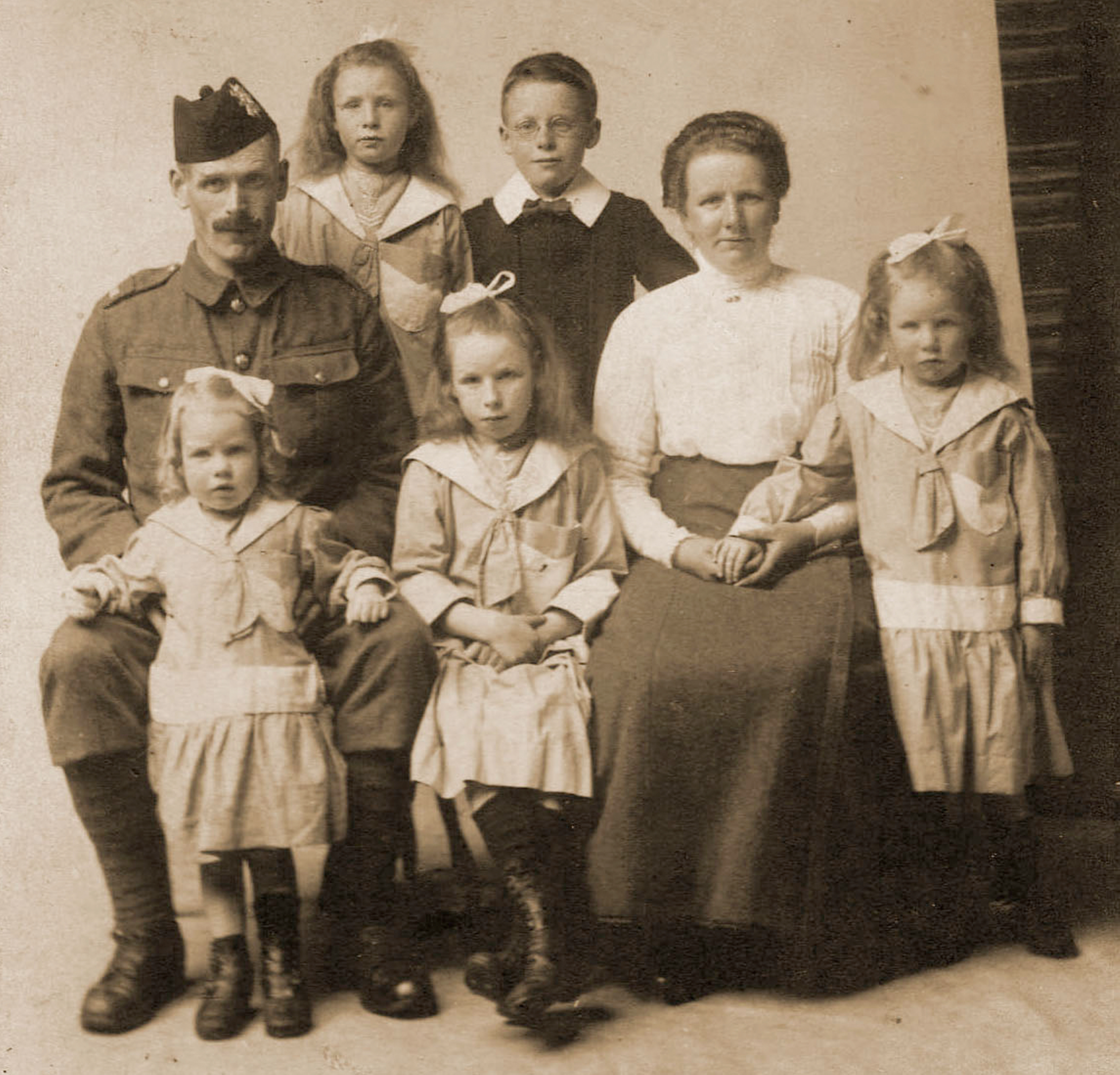Using Military Documents in your Family Research
Embarking on the journey of uncovering your family history can be an exciting adventure, and military records serve as a treasure trove of information for genealogy enthusiasts. In this comprehensive guide, we will delve into the significance of military records in family history research, providing insights into the valuable information they can unveil about your ancestors.
The Importance of Military Records:
Military records stand as an indispensable reservoir of information, particularly for those delving into the histories of ancestors who honourably served in the armed forces. Whether these individuals contributed their dedication during periods of wartime tumult or in peacetime tranquillity, the meticulous details embedded within military records provide an illuminating window into the experiences and stories that define your family's legacy.
The significance of military records transcends mere service details; it extends to the broader context of understanding the multifaceted lives of your forebears. These records become the threads that intricately weave together a more comprehensive family narrative. They unveil not only the dates and locations of enlistment but also the specific units your ancestors were part of, the ranks they achieved, and potential distinctions earned during their service.
What sets military records apart is the granularity of information they offer. Beyond the rigid confines of military duty, these records might provide a glimpse into physical attributes, offering a personal touch to the often stoic historical accounts. If your ancestor traversed the perilous realm of combat, these records may unfold tales of valour through details about awarded medals or scars incurred in the line of duty.
Furthermore, military records extend their relevance beyond the battlefield, offering a post-service perspective. Pension applications, filed subsequent to discharge, might reveal additional biographical facets, such as birthdates, birthplaces, and familial connections, contributing substantially to the comprehensive tapestry of your family history. In essence, military records emerge as not just a registry of service but as storytellers recounting the resilience, sacrifice, and triumphs that define your familial roots.
Accessing Military Records:
Embarking on your research journey into military records can be navigated through various channels, offering both online accessibility and on-site exploration. Platforms such as Ancestry or FamilySearch serve as digital gateways to an extensive array of Military Service Records, providing a user-friendly interface for tracing the footsteps of ancestors who served in the armed forces. These online repositories facilitate efficient searches and offer a wealth of information at your fingertips.
For those drawn to the allure of historical archives, a visit to national archives can be a richly rewarding endeavour. Physically immersing yourself in these repositories opens the door to tangible connections with the past, allowing you to leaf through original documents and immerse yourself in the historical context of your ancestors' military service.
It's crucial to bear in mind the unique archival landscape of Canadian Military records, which may find their home under the United Kingdom's archives due to historical affiliations. To navigate this labyrinth of information effectively, leverage finding aids, and invaluable tools that streamline your search, ensuring a more focused and fruitful exploration of the vast reservoir of military history. Whether online or within the hallowed halls of national archives, these diverse avenues promise an enriching experience as you uncover the layers of your family's military legacy.
What You Can Find in Military Records:
Military Service Records can be like unlocking a treasure trove of your ancestors' experiences, providing a vivid tapestry of their military journey and post-service life. Here's an in-depth exploration of the wealth of details these records can offer to genealogical researchers:
-
Enlistment Details: Discovering when and where your ancestor enlisted is akin to opening a door to their commitment and sense of duty. These details not only mark the beginning of their military service but also offer insights into the geopolitical context of the times, adding depth to their historical footprint.
-
Unit and Rank: Delving into the unit and rank your ancestor held during service unveils a hierarchical structure that shaped their military experience. Understanding any promotions received provides a narrative of their career progression and contributions within the armed forces.
-
Physical Descriptions: Some military records go beyond the conventional and include physical attributes like height or eye colour. These seemingly minor details add a personal touch, allowing you to envision your ancestor as more than just a historical figure, but as a unique individual with distinct characteristics.
-
Combat Experience: For ancestors who faced the rigours of combat, military records become a battlefield chronicle. Details about awarded medals showcase their bravery and contributions, while insights into injuries sustained during battle offer a poignant glimpse into the sacrifices they endured in service to their country.
-
Post-Service Life: The journey doesn't end with discharge. Pension applications filed post-service act as epilogues, revealing the chapters of your ancestor's life beyond the military. Birthdates, birthplaces, and familial details like a spouse's name or children's names provide a postscript, allowing you to continue tracing their footsteps through civilian life.
In interpreting these rich records, researchers become storytellers piecing together the intricate mosaic of their ancestors' lives. Each detail unfolds like a chapter, contributing to a broader understanding of familial history and the profound impact of military service on individual legacies.
As with any historical document, military records may contain errors or omissions. Cross-check facts using multiple sources to ensure accuracy. Supplement military records with other government documents, such as land deeds and wills, to create a more comprehensive family tree.
Tips for Using Military Records
Navigating military records effectively requires a strategic approach, blending meticulous research with a keen eye for patterns. Here's an in-depth exploration of the tips for maximizing the use of military records:
-
Start with Yourself: Initiate your journey into military records by focusing on your immediate ancestors. Begin with the known—your own family—before delving into the complexities of distant relatives. This methodical approach allows for a seamless transition from the familiar to the unknown, creating a foundation for a more comprehensive exploration.
-
Identify Patterns: Military records often unveil subtle yet significant patterns that can guide your research. Scrutinize the data for recurring themes, such as multiple family members born in the same town or sharing a common military unit. These patterns serve as breadcrumbs, hinting at interconnected stories and offering a roadmap for further exploration into shared experiences or geographical ties.
-
Utilize Online Databases: Harness the power of technology by exploring online databases and indexing tools. Platforms like Ancestry or FamilySearch offer a convenient and efficient way to access a vast array of military records, saving you time and streamlining your search. The digital realm provides a user-friendly interface, enabling you to navigate through expansive datasets with ease.
However, the digital landscape should not overshadow the potential of offline sources. Local archives, historical societies, and physical repositories harbour hidden gems that might elude online databases. A visit to these tangible spaces can unveil original documents, manuscripts, and contextual information that might not be available in the digital realm.
- Observe Clothing and Uniforms: Photographs hold the key to unraveling your ancestors' military past. When analyzing family pictures, focus on clothing and uniforms. These visual cues not only aid in dating the photo but also offer insights into your relative's military service. Notice distinctive features in uniforms, such as badges or insignias, to determine their era. Utilize historical resources to match these details, pinpointing when the photo was taken. Additionally, variations in uniforms can hint at geographical contexts, helping narrow down where your relative served. By combining visual observations with historical research, you'll unlock a visual portal to your family's military heritage.
By combining a systematic starting point, astute pattern recognition, and a balanced utilization of both online and offline resources, researchers can unlock the full potential of military records. These tips serve as a compass, guiding enthusiasts through the intricate terrain of familial history, ensuring a thorough and rewarding exploration of their ancestors' military legacies.
Conclusion:
Military records offer a captivating journey into your family's past, providing intricate details about your ancestors' service, sacrifices, and post-service lives. Dive into the world of military record research to unlock the rich tapestry of your family history today. Happy researching!

Article by Carol Walsh
Carol Walsh is the CEO of Creative Roots, a professional genealogy company. She has a passion for preserving family history and storytelling. Carol's research methodology centers around fact-finding and publishing in a format that readers can use to preserve the stories. Her ultimate goal is to help families connect with their past and each other.





